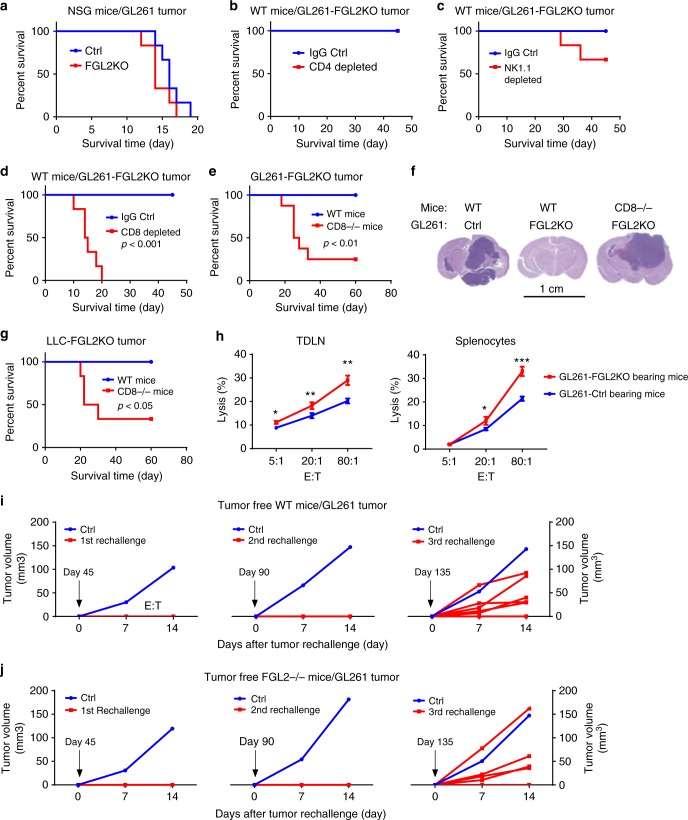Fig. 3.
CD8+ T cell-dependent clearance of FGL2KO tumor. a Survival analysis of immunodeficient NSG mice implanted with GL261-Ctrl or GL261-FGL2KO tumor cells (5 × 104 cells per mouse; n = 6 per group). b–d Survival analysis of WT immunocompetent C57BL/6 mice implanted with GL261-FGL2KO tumor cells and treated with anti-CD4 (GK1.5), anti-NK1.1 (PK136), or anti-CD8 (2.43) depletion antibody or IgG as control (Ctrl) (n = 6 per group). e Survival analysis of WT mice and CD8−/− mice implanted with GL261-FGL2KO tumor cells (n = 6–8 per group). f H&E-stained histopathological sections of brain tissues from representative mice from each group shown in e. Scale bar = 1 cm. g Survival analysis of WT mice and CD8−/− mice implanted with LLC-FGL2KO tumor cells (n = 6 per group). h Cytolytic activity of CD8+ T cells from tumor-bearing mice against GL261 tumor cells. Lymphocytes from tumor-draining lymph nodes (TDLNs) or spleens of mice implanted with FGL2KO tumor cells caused significantly more tumor lysis than those from mice implanted with Ctrl tumor cells (n = 3 mice per group). Two-way ANOVA was used to calculate the two-sided P values. E:T, the ratio of effector cells to target cells. *P < 0.05, **P < 0.01, ***P < 0.001 compared with GL261-Ctrl tumor-bearing mice. i Tumor rechallenge by subcutaneous implantation of GL261-Ctrl cells at days 45, 90, and 135 days after primary challenge of GL261-FGL2KO by intracerebral implantation in WT mice (n = 7). Subcutaneous growth of GL261-Ctrl tumors in age-matched naive WT mice challenged with GL261-Ctrl cells at the same times but without primary challenge is also shown. j The experiment shown in i was repeated in FGL2−/− mice (n = 6). All data are representative of at least two independent experiments. The survival curves were analyzed by Kaplan–Meier analysis and the log-rank test was used to compare overall survival between groups

